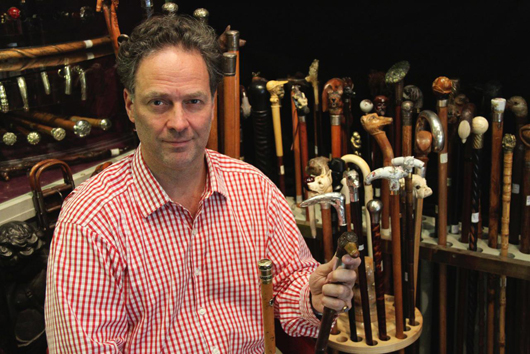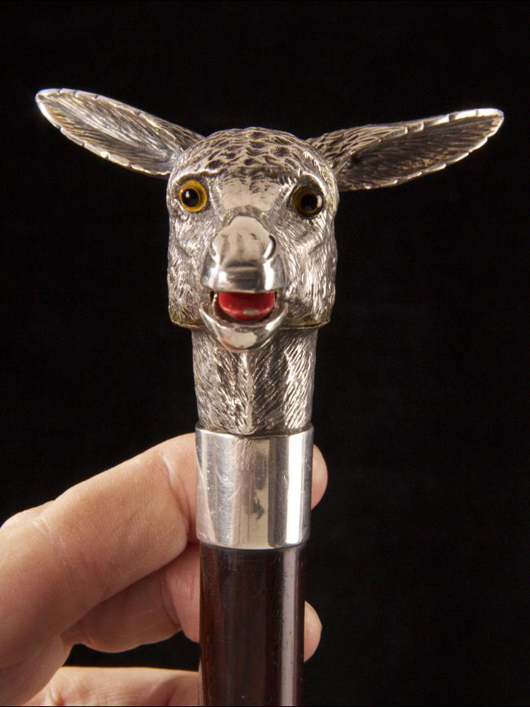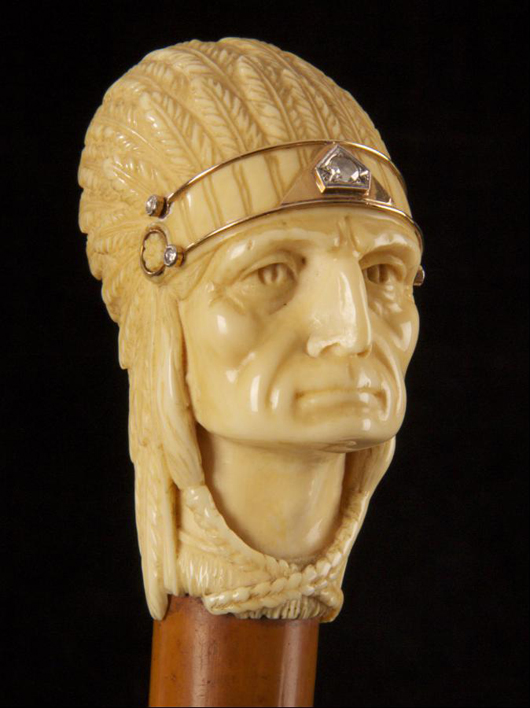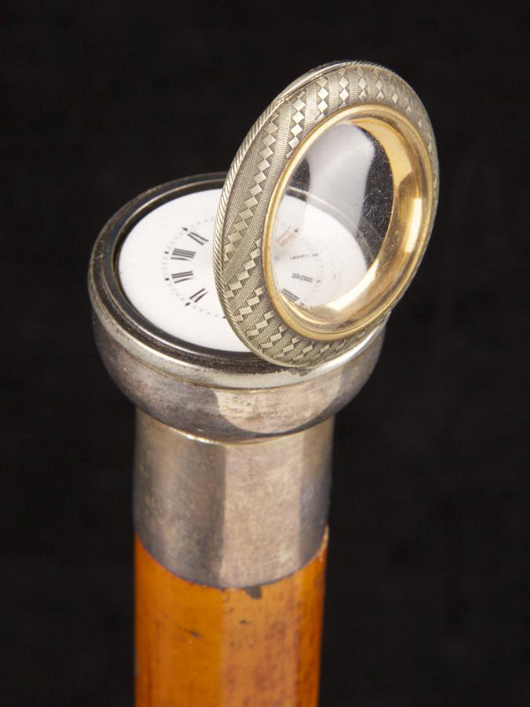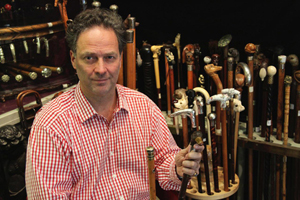
LONDON- My first came from the hedgerows, coppices and woods copying those used by the farmers on whose land we played as children. After all, no self-respecting farmer went anywhere without a stick and nor did his junior followers.
My next was an altogether more serious status symbol. It came my way on the death of a favorite uncle and I still have it. The only difference is that now, I’m tall enough to use it as it was intended. When I first got my hands on it, it came up to my shoulders.
As a walking stick, it’s an impressive fashion accessory. Its shaft is made from an attractively knobbly piece of tree of indeterminate specie, topped by a handle formed from the point of a stag’s antlers. Where the two are joined is a hallmarked silver collar.
The only other two I have ever owned are fortunately no longer in my collection. They were on loan from the National Health Service and thankfully, I was able to return them once my broken bones had set. But I’ve seen some stunning and fascinating walking sticks in my travels since and they would make an intriguing collection.
In high Victorian days there was a walking stick or cane for any occasion and even for different times of the day. They were many things to many men: Aside from being an aid for the infirm, they were a defensive weapon, a badge of office indicating importance and, perhaps most importantly, a costume accessory intended to be “worn” rather than used.
In Regency times, dandies carried sticks with a hollow handle covered by a gold or silver inner and outer cover, the former with an elaborate design cut into the metal. The container held a sponge soaked in aromatic vinegar which, like a vinaigrette, warded off evil smells and, it was thought, illness.
Later variations on the same theme included canes concealing a receptacle for snuff; cigars and cutter; medicine; money; watch and (my favorite) a long, slender phial for brandy in the lower part of the cane and a glass in the upper.
Gunsticks and others containing swords and knives are not uncommon. They make an interesting collection, but beware of modern fakes. Another a word of warning here: It is illegal for a dealer or auction house in the UK to sell a swordstick that is less than 100 years old, as it is to carry a swordstick in the street, although collectors are perfectly at liberty to display them in their homes.
Some of the finest walking sticks in the world will be on show in London next month when the capital hosts the aptly named Canemania 2014, a four-day biannual conference celebrating the once ubiquitous accessory, previously hosted by collectors in the United States, France and Italy, This year’s chairman, Dominic Strickland of Michael German Antiques in Kensington Church Street, said the event is open to both established collectors and “those who are just igniting a new passion.”
“Antique walking canes have become an interesting and much admired collectors’ field in recent years,” he said. “Their attraction for the collector is obvious. They have interesting decorative handles that cover every theme and subject that you can possibly imagine and so often make a connection to an individual.
“They are made from all types of materials, from the most simple of tree branches, to the most exotic jewels and gold. They also turn up in all sorts of places, wherever you may travel, and so for the collector the joy of discovery is frequent.
“From the most simple examples carved from a piece of root wood or similar, to the most exquisite and extravagant pieces designed to show your place in social society, by makers such as Faberge and Falize, there are canes for all to collect.
Canemania runs from Sept. 10-13 at the Royal Garden Hotel Kensington with two days of presentations, talks and special exhibits. Workshops and a buy-swap-sell-meet for dealers and collectors are on Sept. 11.
Speakers will include dealers, collectors, curators and trade professionals. Lectures will include Art Nouveau and Art Deco canes by Swiss dealer and author Patrick Gutknecht and “The Story of System Swordcanes” by John Monek, a collector and owner of Cane Through the Ages auctions.
Auctioneers Bonhams and Christie’s have sales planned to coincide with the event. A drinks reception on Sept. 10 at Bonhams’ Knightsbridge saleroom will give delegates the opportunity to register for the conference and view the S & L Collection – “one of the best collections of canes in private hands in the UK.”
Rarest is an 18th century cane with a chased gold knop by William Collins, circa 1740, with relief decoration inspired by Watteau’s depiction of a scene from the Commedia dell’arte. It is estimated at £4,000-£6,000, while a group of Malacca canes dating from the late 17th and early 18th centuries with piqué-decorated ivory knops have estimates ranging from £2,000-£4,500. The auction is Sept. 24.
Piqué ivory was a technique brought to England by Huguenot refugees after the French King Louis XIV revoked the Edict of Nantes in 1685 and ordered the destruction of their churches. The large, often mushroom-shape knops are generally pierced with eyelet holes and decorated with delicate inlays of thin gold or silver wires. The technique is also found on ivory and tortoiseshell boxes.
Christie’s has a section devoted to canes in their Style & Spirit sale in South Kensington on Sept. 16 including an amusing novelty parasol, the handle of which is modeled as a donkey’s head with glass eyes. A button-operated mechanism causes the animal’s ears to wag and its mouth to open revealing a red tongue. It is estimated at £1,200-£1,800, while a Victorian ivory and silver-mounted cane with a knop modeled as a skull also has glass eyes, a projecting tongue and revolving eyeballs. It is estimated at £1,800-£2,500.
Rounding off the conference is a guided walking tour of historic Kensington – canes presumably de-rigueur – and a gala dinner at the Ironmongers’ Hall in the City of London.
For full details and to apply for tickets, visit www.canemania2014london.com.

ADDITIONAL IMAGES OF NOTE
